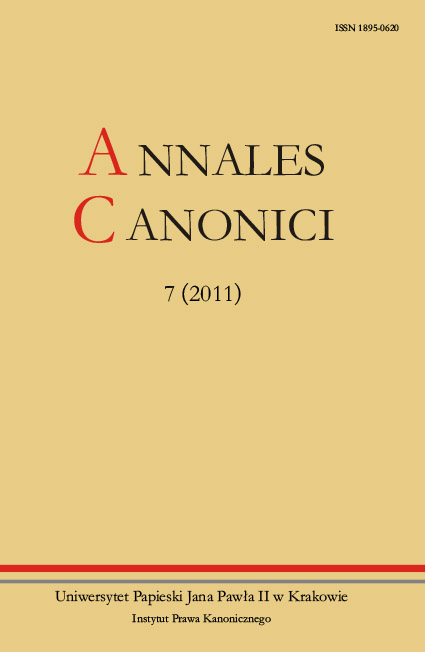The Significance of the Techniques of Encoding Canonical Norms in an Act of Law, CIC 1983 as an Example
DOI:
https://doi.org/10.15633/ac.0711Abstract
The problem of the techniques of encoding norms in legal articles, namely, condensation and division, is very important for legislators and interpreters as well. In CIC 1983 a lot of examples can be found of both techniques.
The legislator must not look only at the sentences he wrote and analyze their external wordy shape. He must go deeper and be imaginative enough to see how users of law in process of interpretation would get out the norms from the text, and what the norms would be. In this sense a legislator is the first interpreter of his law, even before promulgation of a law. During the process of drafting the law, he must try to foresee situations in which the norms from the canons would be interpreted and applied.
The interpreter, knowing that the norm he is trying to find can be encoded in many canons, is urged to know duly the whole system of law. He must also try to take out every possible norm which legislator encoded. The awareness of the problem of encoding norms in legal text and of the proper usage of the techniques of condensation and division can be of great help for church legislators and interprets in fulfilling their duties for the sake of the community of the faithful.
Downloads
Published
Issue
Section
License

This work is licensed under a Creative Commons Attribution-NonCommercial-NoDerivatives 3.0 Unported License.
The author declares that he owns the copyright to the work (article) and that it is not limited in the scope covered by the above declaration and that the work (article) is an original work and does not infringe the copyright of other persons.
The author allows the Pontifical University of John Paul II in Krakow to use the paper free of charge, non-exclusive and unlimited in time by, i.e.:
– keeping in records and reproduction of the copies of the work using printing, reprography, magnetic recording and digital technology;
– trade in the original or copies on which the work has been recorded (introduction to the market, lending or rental of the original or copies, public exhibition, display, as well as making the work available to the public in such a way that everyone can have access to it in a place and at a time chosen by them);
– inclusion of the work in a collective work;
– granting by the Pontifical University of John Paul II in Krakow a Creative Commons Sub-licence Authorship Recognition-Non-commercial Use-No Subsidiaries 3.0 Poland
The Pontifical University of John Paul II in Krakow makes the work available on the Magazine Platform of the university under the Creative Commons Attribution-Non-commercial Use-No Subsidiary Works 3.0 Poland license.
Thus, it entitles all interested parties to use the work under the following conditions:
- the author and the title of the work will be given,
- the place of publication (journal title and internet address of the originally published work) will be indicated,
- the work will be distributed in a non-commercial manner,
- no dependent works will be created.

